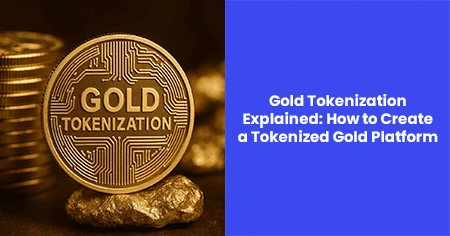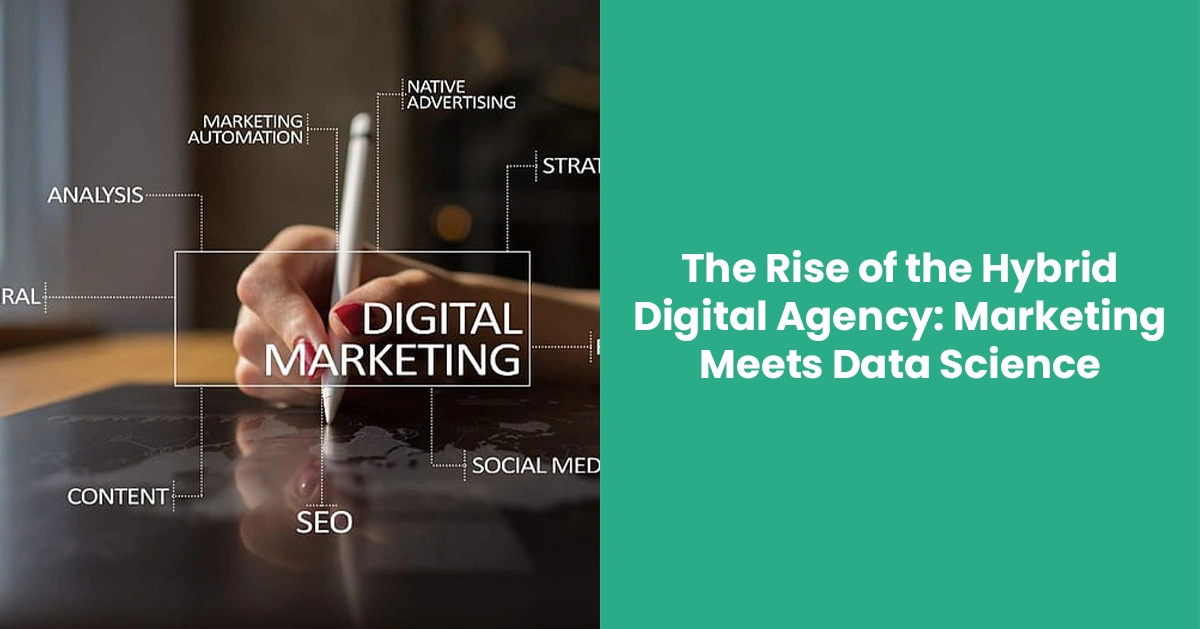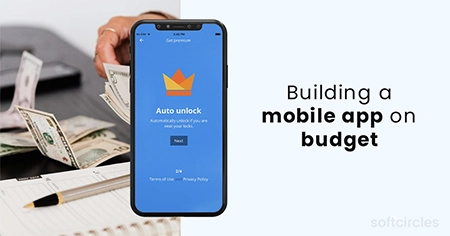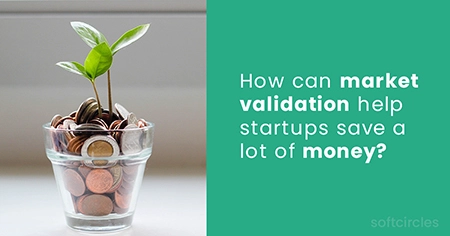As of 2025, the global gold token market has exceeded $10 billion in assets under management (AUM). Leading projects such as Tether Gold (XAUT), Paxos Gold (PAXG), and offerings by Perth Mint are spearheading the adoption of secure, blockchain-based gold tokens. This rise reflects growing interest from both institutional and retail investors in digital gold tokens as a stable hedge against inflation and economic uncertainty.
While gold remains the focal point, the broader tokenized commodity space is also gaining momentum, spanning assets like silver, diamonds, and real estate. However, gold remains the most sought-after due to its historical value and stability.
In this guide, we’ll explore the fundamentals of gold tokenization, its benefits, regulatory considerations, and key industry use cases. For businesses aiming to build a secure and scalable gold-backed token, partnering with an experienced gold token development company like SoluLab is essential to navigate the technical and compliance complexities of launching a successful tokenized asset.
What is Gold Tokenization?
Gold tokenization is the process of representing physical gold assets as digital tokens on a blockchain network. Each token corresponds to a specific weight or unit of gold, commonly denominated in grams, ounces, or kilograms, and backed 1:1 by physical reserves held securely in audited vaults.
These tokens act as digital certificates of ownership, allowing individuals and institutional investors to trade fractional ownership of gold seamlessly without the logistics or security concerns associated with physically transporting or storing bullion.
Core Concept:
Tokenizing gold turns a traditionally illiquid, high-barrier asset into a digitally liquid, fractionally tradeable, and globally accessible financial instrument.
How Gold Tokenization Works: Step-by-Step Breakdown
Developing a gold tokenization platform involves a well-defined workflow that integrates blockchain infrastructure, physical gold custody, smart contract programming, and compliance mechanisms.
- Physical Gold Procurement and Custody
Gold is sourced in the form of bars or bullion and securely stored in third-party vaults managed by reputed custodians. Regular audits and comprehensive insurance coverage ensure that the physical gold backing the tokens remains safe, verifiable, and protected against risks like theft or damage. - Token Issuance on Blockchain
A specialized gold tokenization development company creates smart contracts on blockchain networks like Ethereum, Polygon, Binance Smart Chain, or Hyperledger Fabric. Each digital token generated corresponds to a specific, verifiable quantity of the physical gold held in custody. - Token Distribution and Sale
Once minted, gold tokens are made available for purchase through various channels including cryptocurrency exchanges, over-the-counter (OTC) platforms, and custom-built white-labeled applications. All token transactions, ownership records, and audit trails are transparently recorded on the blockchain. - Redeemability and Secondary Trading
Investors holding gold tokens can either redeem them for physical gold delivery, subject to platform terms and geographic constraints, or trade the tokens on secondary digital asset markets, ensuring liquidity and flexible exit options.
Types of Gold-Backed Tokens in Asset Tokenization Ecosystems
The concept of gold tokenization isn’t limited to a single token model. Different types of gold-backed tokens exist today, catering to a variety of investor needs, risk profiles, and use cases across DeFi, institutional finance, and retail investment sectors. Below is a detailed overview of the most popular gold-backed token models currently driving the global asset tokenization and RWA tokenization markets.
1. Fungible Tokens (ERC-20 Standard and Others)
Fungible gold tokens represent fractional, interchangeable units of gold on a blockchain. These tokens typically adhere to standardized token formats like ERC-20 (Ethereum), BEP-20 (Binance Smart Chain), or Polygon’s token standards, ensuring wide compatibility with wallets, exchanges, and decentralized finance (DeFi) protocols.
Key Characteristics:
- Each token represents a fixed, identical value (e.g., 1 token = 1 gram of gold).
- Fully compatible with major crypto wallets and exchanges.
- High liquidity and transferability.
Real-World Examples:
- PAX Gold (PAXG)
- Tether Gold (XAUT)
2. Non-Fungible Tokens (NFT Certificates for Gold)
With the growing intersection of NFTs and real-world asset tokenization, many platforms are issuing gold-backed NFTs that digitally represent specific, uniquely identifiable gold bars.
Key Characteristics:
- Each NFT corresponds to a particular gold bar with serial number, weight, and purity details.
- Perfect for collectors, institutional gold vault clients, or those requiring unique ownership certificates.
- Easily tradable on NFT marketplaces supporting real-world assets.
Use Cases:
- Digital proof of ownership for allocated gold bars.
- Private vault management solutions for high-net-worth individuals.
3. Stablecoins Pegged to Gold’s Spot Price
Gold-pegged stablecoins are gaining prominence as digital assets that maintain price stability by directly tracking gold’s spot price. Unlike traditional crypto assets, these tokens offer investors a stable store of value linked to the historically stable price of gold.
Key Characteristics:
- Pegged 1:1 to the current market price of gold (typically measured per troy ounce or gram).
- Used as a hedge against inflation and fiat currency devaluation.
- Ideal for cross-border transactions and remittance markets where price stability is crucial.
Popular Examples:
- PAX Gold (PAXG)
- Tether Gold (XAUT)
- DGX by Digix
4. DeFi-Integrated Gold Tokens (Gold in Decentralized Finance)
The rise of DeFi (Decentralized Finance) has created demand for gold tokens that can seamlessly interact with decentralized lending, borrowing, and liquidity protocols.
Key Characteristics:
- Used as collateral in DeFi lending pools.
- Integrated into liquidity farming, yield generation, and automated market-making (AMM) protocols.
- Helps unlock liquidity from traditionally illiquid gold assets.
Real-World Applications:
- Borrow stablecoins like USDC/DAI using gold tokens as collateral.
- Stake gold tokens in liquidity pools to earn yield.
Benefits of Gold Tokenization for Investors and Enterprises
Implementing gold tokenization unlocks transformative advantages for both retail investors and enterprise stakeholders. Below is an in-depth look at the core benefits driving adoption across the global RWA tokenization landscape.
1. Increased Liquidity and Market Accessibility
Traditional gold markets are often constrained by geographic limitations, banking hours, and regulatory barriers. In contrast, tokenized gold assets enable 24/7 trading across global digital asset exchanges and DeFi platforms.
Key Advantages:
- Instant buy/sell capabilities across centralized and decentralized exchanges.
- On-demand liquidity for gold holdings.
- Access for investors in countries with restrictive gold trading policies.
2. Fractional Ownership: Democratizing Gold Investments
Historically, investing in gold required significant capital outlay, limiting access to institutional players or wealthy individuals. With fractional gold tokenization, investors can now own minuscule fractions of gold (as small as 0.001 grams).
Benefits:
- Lower entry barrier for retail investors.
- Broader inclusion of investors from developing economies.
- Flexibility to diversify small investment portfolios.
3. Enhanced Transparency and Security via Blockchain
One of the most lauded benefits of gold tokenization is the transparency and immutability that blockchain technology offers.
Security Features:
- Every token issuance and transfer is permanently recorded on-chain.
- Tamper-proof transaction history improves investor trust.
- Regular proof-of-reserve audits verifiable on blockchain explorers.
4. Reduced Transaction Costs and Settlement Delays
The traditional gold trade involves multiple intermediaries (brokers, clearinghouses, custodians), each charging service fees and extending settlement times (often T+2 or longer).
Gold tokenization platforms eliminate these inefficiencies:
- Peer-to-peer (P2P) trading models reduce brokerage fees.
- Automated smart contracts handle settlements.
- Minimized need for third-party clearance reduces processing costs.
5. Instant Settlement and Transferability
Unlike traditional gold transactions that often involve days of clearing time, gold token transfers settle in minutes (or even seconds) thanks to blockchain finality.
Use Case Scenarios:
- Institutional settlements between gold trading firms.
- Real-time cross-border gold remittance.
- Instant wallet-to-wallet gold transfers.
6. Regulatory Compliance and Legal Clarity
In the evolving landscape of RWA tokenization, regulatory compliance is crucial. Modern gold tokenization development companies integrate KYC (Know Your Customer), AML (Anti-Money Laundering), and jurisdictional compliance frameworks directly into the platform architecture.
Compliance Mechanisms
- Automated KYC onboarding for investors.
- Real-time transaction monitoring for AML compliance.
- Whitelisting of addresses for jurisdictional control.
Real-Time Industry Adoption (2025 Market Snapshot)
- PAX Gold (PAXG): Over $750 million market cap as of June 2025
- Tether Gold (XAUT): Approximately $600 million in tokenized gold reserves.
- Perth Mint Gold Token (PMGT): Backed by Australian government gold reserves.
- Growing DeFi protocols like Maple Finance and Aave Arc are accepting gold tokens as collateral for institutional lending.
Use Cases: Where Gold Tokenization is Making an Impact
1. Gold Investment and Trading Platforms
Businesses and exchanges are offering gold-backed tokens to attract retail traders looking for digital alternatives to ETFs and physical bullion.
2. Asset-Backed Stablecoins
Gold-backed stablecoins are gaining traction as alternatives to USD-backed stablecoins, providing investors with an inflation hedge.
3. Digital Wallet Integration
Tokenized gold can be held in multi-currency digital wallets alongside crypto, fiat, and other tokenized assets like silver, diamond, and copper tokens.
4. Collateralized Lending in DeFi
DeFi lending platforms are using gold tokens as collateral, enabling users to borrow stablecoins or other crypto assets without liquidating their gold holdings.
5. Institutional Hedging and Settlement Solutions
Large financial institutions and central banks are exploring RWA tokenization of gold for settlement of cross-border trades and hedging foreign reserves.
Challenges and Risks in Gold Tokenization
While promising, gold tokenization faces several operational and regulatory hurdles:
Regulatory Uncertainty
Tokenized gold may be classified as a security, commodity, or digital asset, depending on jurisdiction. Navigating SEC, FCA, or FINMA regulations requires legal expertise.
Custodial Risks
The physical security of the underlying gold is paramount. Issues like insurance fraud, vault mismanagement, or lack of audits can undermine token credibility.
Smart Contract Vulnerabilities
Without proper auditing, smart contracts can contain bugs or vulnerabilities that risk investor funds.
Market Volatility
Even though gold is considered stable, the crypto market dynamics where tokens trade can introduce short-term volatility.
Step-by-Step Gold Tokenization Development Process
Building a secure, scalable, and regulation-ready gold tokenization platform requires a systematic, multi-phased development approach. Below is a detailed breakdown of the essential steps involved in delivering a fully functional gold tokenization solution, as typically followed by a top gold tokenization development company like SoluLab.
Phase 1: Business Requirement Analysis
The first and most critical phase in any gold tokenization development project involves gathering and analyzing detailed business requirements. This starts with understanding the target audience—whether the platform is aimed at retail investors, institutional players, DeFi enthusiasts, or a combination of all three. Clear audience segmentation ensures the platform’s features and user experience are tailored for maximum engagement and utility.
In addition, regulatory mapping is conducted based on the target geographies where the platform will operate. Given the complex regulatory environment surrounding asset tokenization and RWA tokenization, it is crucial to identify applicable securities laws, anti-money laundering (AML) regulations, and Know Your Customer (KYC) requirements early in the process.
Another essential aspect is tokenomics and supply strategy planning. Here, experts define key parameters such as total token supply, gold-to-token ratio, pricing models, transaction fee structures, and governance mechanisms. Proper tokenomics is fundamental to ensure liquidity, market stability, and long-term adoption of the gold-backed tokens
Phase 2: Platform Design and Architecture
Once business goals and compliance frameworks are defined, the next step focuses on platform design and technical architecture. UI/UX designers craft intuitive wireframes and investor dashboards that allow seamless navigation for buying, selling, and tracking tokenized gold holdings.
A critical decision at this stage is the selection of the blockchain network. Depending on project requirements, developers may recommend a public blockchain like Ethereum or Polygon for better liquidity and DeFi integration, or a private/consortium blockchain like Hyperledger Fabric for enterprise-grade security and privacy controls.
In parallel, the backend API architecture is designed to handle various platform functionalities, such as transaction management, real-time gold price feeds, user account controls, and third-party integrations. API scalability and modularity ensure future support for additional tokenized assets like silver, copper, or diamond tokenization if the client expands into other RWA tokenization categories.
Phase 3: Smart Contract Development and Testing
The core engine of any gold tokenization platform lies in its smart contracts. During this phase, blockchain developers create custom smart contracts that govern critical operations like token minting, burning, and transferring. These contracts also embed compliance logic, including investor whitelisting and KYC/AML layers, ensuring regulatory readiness from day one.
Comprehensive testing follows, including unit testing, integration testing, and user acceptance testing (UAT). Additionally, penetration testing and vulnerability assessments are performed to identify and patch any potential security gaps. Leading gold tokenization development services prioritize smart contract audits, often engaging third-party security firms to validate the integrity of the codebase.
Phase 4: Custodial and Vault Integration
Since each digital token must correspond to a specific unit of physical gold, seamless custodial and vault integration is essential. In this phase, developers build real-time audit API connections with third-party vault providers like Brinks or Loomis. This integration allows for automated verification of gold reserves and ensures ongoing token-to-gold reconciliation.
Token issuance and burning processes are often directly linked to the vault’s audit data, maintaining a strict 1:1 gold reserve backing for all circulating tokens. This is a regulatory and investor trust requirement for any credible gold tokenization development company.
Phase 5: Wallet, Exchange, and Payment Gateway Integrations
For a tokenized gold platform to succeed, it must support smooth interactions with various wallets and exchanges. Developers integrate support for popular crypto wallets like MetaMask, Trust Wallet, and Fireblocks, ensuring that users can securely store and transfer their gold tokens.
Further, integrations with both centralized exchanges (CEX) and decentralized exchanges (DEX) allow for liquidity and secondary market trading of the tokens. Payment gateway integrations (like Stripe or Circle) enable fiat-to-crypto onramps, giving users multiple ways to invest in tokenized gold, silver, or other assets covered under asset tokenization initiatives.
Phase 6: Platform Deployment
After development and integration, the platform is ready for deployment. Depending on business needs, deployment can occur on cloud infrastructure (AWS, Azure, GCP) or on-premises servers for enterprises seeking greater control.
During this phase, engineers set up load balancing and auto-scaling configurations to handle traffic spikes and ensure high availability. Real-time monitoring and logging solutions are also deployed to track system performance, security incidents, and transaction volumes post-launch.
Phase 7: Post-Launch Support and Upgrades
A reliable gold tokenization development company doesn’t end its engagement at deployment. Post-launch support includes smart contract version upgrades, bug fixes, and performance optimization.
With regulatory environments for RWA tokenization evolving rapidly, continuous regulatory change management is also crucial. Development teams ensure that the platform remains compliant as laws governing tokenized commodities like gold, silver, copper, and diamonds change over time.
Finally, feature enhancements like NFT minting for gold bar certificates or DeFi pool integrations for lending and borrowing against tokenized gold are often introduced in subsequent development cycles, ensuring the platform remains competitive and feature-rich.
Investment Opportunities of Gold Tokenization
Gold tokenization has transformed the way investors can interact with and capitalize on the value of this precious metal. By converting physical gold into digital tokens stored on a blockchain, new avenues for investment are opening up, creating more flexibility, security, and accessibility. Let’s explore some of the key investment opportunities that gold tokenization offers.
1. Fractional Ownership
Gold tokenization allows investors to purchase fractions of gold rather than entire bars or coins, making it accessible to those who may not have the means to buy large amounts of physical gold. Even small portions, such as grams or milligrams of gold, can be bought and sold digitally, democratizing gold investment for retail investors.
2. Enhanced Liquidity
In traditional gold markets, selling physical gold can be a slow process that requires finding a buyer, transferring fractional ownership, and dealing with intermediaries. With gold tokenization, investors can trade tokenized gold instantly on digital platforms, increasing liquidity. This allows for quicker buying and selling, making gold a more dynamic asset in an investor’s portfolio.
3. Global Accessibility
Tokenized gold can be bought and sold across borders without the need for physically transporting the gold. Investors from any part of the world can invest in tokenized gold through online platforms, expanding market access and increasing the potential for broader participation in the gold market.
4. Lower Storage and Security Costs
Owning physical gold requires secure storage, such as in bank vaults or safety deposit boxes, which incurs additional costs. With tokenized gold, ownership is stored securely on the blockchain, eliminating the need for physical storage and reducing the associated costs. Blockchain’s inherent security features further protect investors from theft or loss.
5. Integration with Decentralized Finance (DeFi)
Gold-backed tokens can be integrated into the growing Decentralized Finance (DeFi) ecosystem, where they can be used as collateral for loans, yield farming, or liquidity provision. This opens up new financial opportunities that were previously unavailable with physical gold. Tokenized gold can now be part of automated financial strategies, adding another layer of value for the investor.
6. Real-Time Market Exposure
Investors holding gold tokens can enjoy real-time market exposure without waiting for traditional processes to take place, such as shipping or certifying physical gold. This instant exposure allows for more strategic market plays, especially in times of economic volatility, where gold typically acts as a haven asset.
Gold tokenization is not only making the precious metal more accessible and flexible but also paving the way for innovative financial strategies. With opportunities for fractional ownership, enhanced liquidity, and integration into modern finance platforms like DeFi, investors have more ways to capitalize on gold’s stable value and historic reputation as a safe asset.
Future Trends: What’s Next for Gold Tokenization?
The future of gold tokenization is closely tied to the overall growth of RWA tokenization and Web3 adoption. Key trends shaping the landscape include:
1. Integration with Central Bank Digital Currencies (CBDCs)
Tokenized gold may play a key role in collateralizing CBDCs for emerging economies.
2. DeFi Collateralization of RWAs
Protocols like MakerDAO and Aave Arc are already experimenting with tokenized RWAs for lending pools.
3. Growth of Multi-Asset Tokenization Platforms
Enterprise-grade platforms will offer multi-commodity tokenization, bundling gold, diamond, copper, and silver tokens under unified dashboards.
4. Institutional Adoption
Major banks like HSBC, Standard Chartered, and JPMorgan are actively exploring gold-backed tokenization for global settlements.
5. Regulatory Standardization
International bodies like the FATF and BIS are expected to issue new guidelines governing tokenized commodities by 2026.
Conclusion: Embracing the Digital Transformation of Gold Investment Through Tokenization
The evolution of gold tokenization is reshaping the landscape of precious metal investments. No longer a futuristic concept, gold tokenization services are becoming a practical solution embraced by forward-thinking enterprises to offer secure, liquid, and digitally accessible gold investment opportunities. As investor interest grows, the adoption of gold tokens is accelerating, driving the rise of innovative blockchain platforms that deliver enhanced transparency, improved liquidity, and lower transaction costs.
BThis shift is not only revolutionizing traditional methods of investing in gold but also creating new avenues for digital investors to diversify their portfolios. The integration of tokenized gold assets into blockchain ecosystems ensures seamless, borderless, and verifiable ownership of real-world value.








